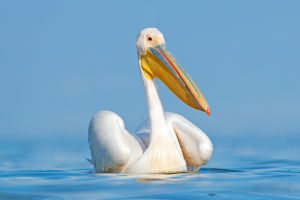Camels, often referred to as the “ships of the desert,” have played a crucial role in arid regions for centuries.
They are resilient animals known for their ability to survive in harsh environments, making them invaluable for transport, agriculture, and milk production.
However, to maximize their potential, effective feeding and management technologies are essential.
1. Nutritional Requirements of Camels
Understanding the nutritional needs of camels is vital for their health and productivity. Unlike other livestock, camels have unique digestive systems that allow them to thrive on fibrous and low-quality feed.
Their diet primarily consists of dry grasses, leaves, and shrubs. However, to ensure optimal growth, reproduction, and milk production, it is crucial to provide a balanced diet enriched with vitamins, minerals, and protein.
Recent research has focused on developing feed formulations that cater to the specific needs of camels. Advanced feeding programs take into account factors such as age, weight, and purpose (e.g., milk production or transportation).
By analyzing the nutritional content of available feed resources, farmers can create custom diets that optimize health and productivity.
2. Precision Feeding Technologies
One of the most significant advancements in camel feeding technology is the implementation of precision feeding systems. These systems utilize sensors and software to monitor the individual dietary needs of camels.
By assessing factors like body condition, feed intake, and nutrient absorption, farmers can adjust diets accordingly.
For example, automated feeding systems can deliver the precise amount of feed to each camel based on real-time data. This approach not only reduces feed waste but also ensures that each animal receives the necessary nutrients to thrive.
Moreover, precision feeding contributes to cost savings, making camel farming more sustainable and profitable.
3. Water Management Innovations
Water is a critical resource for camels, especially in arid regions. Traditionally, water management has been a challenge for camel herders. However, recent innovations have made it easier to provide adequate hydration.
Technologies such as solar-powered water pumps and efficient water storage systems enable farmers to access clean water sources and distribute water more effectively.
Furthermore, research has explored the use of water-saving techniques. For instance, some farmers are implementing techniques such as rainwater harvesting to supplement their water supply.
This approach not only ensures that camels have access to fresh water but also contributes to environmental sustainability.
4. Monitoring Health and Welfare
Advancements in technology have also enhanced health monitoring and management practices for camels. Wearable devices, such as GPS collars and health monitoring sensors, allow farmers to track the movements and vital signs of their camels in real-time.
This data can help detect early signs of illness or distress, enabling prompt veterinary intervention.
Additionally, mobile applications have emerged that assist farmers in managing health records, vaccinations, and breeding schedules. These tools simplify data collection and analysis, making it easier to track the overall health and productivity of the herd.
5. Sustainable Practices and Future Outlook
As the demand for camel products continues to rise, sustainable feeding and management practices are essential for ensuring the long-term viability of camel farming.
Innovations in feed production, such as the use of by-products from crop production, can help create more sustainable diets for camels while reducing reliance on conventional feed sources.
Moreover, educating farmers about the latest technologies and best practices is crucial for improving overall management strategies.
Training programs and workshops can empower camel herders to adopt modern techniques that enhance animal welfare and productivity.
Advancements in camel feeding and management technology are transforming the landscape of camel farming. By focusing on nutrition, precision feeding, water management, and health monitoring, farmers can optimize their practices and improve the well-being of their camels.
As the industry continues to evolve, embracing these technologies will be key to meeting the growing demand for camel products while ensuring the sustainability of this valuable livestock.


